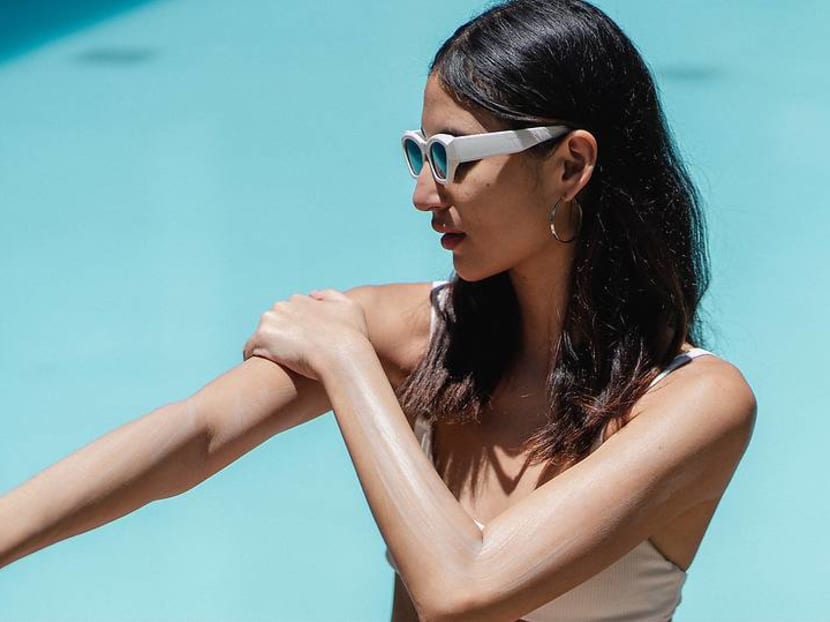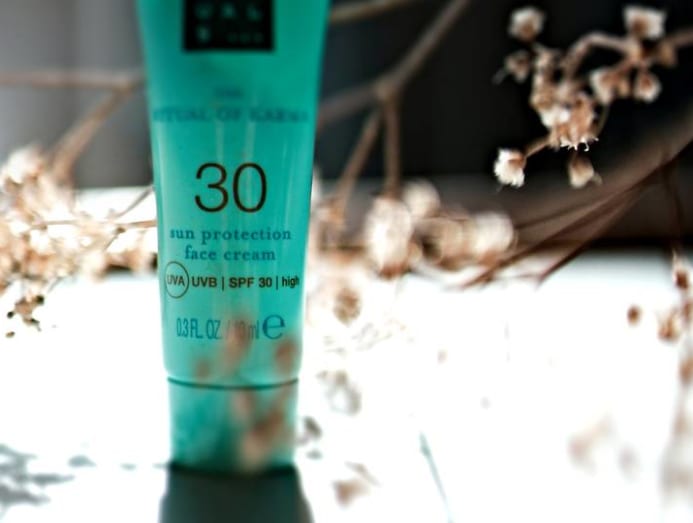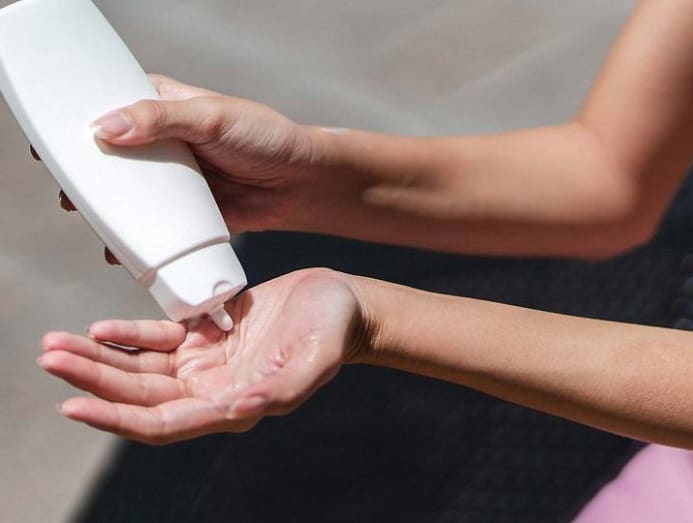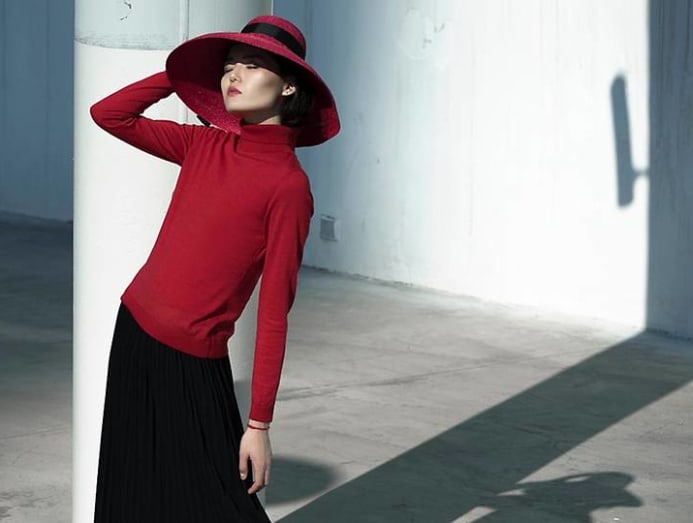Still have dark spots after using sunscreen? You could be applying it the wrong way
Is a higher SPF rating really better? Numbers may be important, but they aren’t everything. Dermatologists tell CNA Lifestyle what else to watch out for to maximise protection.

(Photo: Pexels)
We all want the best for our skin. Which is why it’s no surprise that when buying sunscreen, many of us opt for the highest level of sun protection available.
Besides the texture and formulation of the sunscreen, the other most important deciding factor that convinces us to purchase one is, naturally, the SPF rating that it comes with.
Many people assume that the higher the SPF of the product, the stronger the sun protection it will offer. Theoretically, that may be true, but does stronger really translate into better protection?
Not necessarily, as the dermatologists CNA Lifestyle spoke to revealed.
In fact, while you might have been conscientiously putting on sunscreen daily, you could’ve also been unknowingly subjecting your skin to a higher risk of sun damage.
Think that SPF50 sunscreen will keep you absolutely safe from UV rays all day? That may not be the case – here’s all you need to know about using sunscreen correctly and why the highest SPF isn’t foolproof.
READ: Ladies, here are the best skincare products to remove those pesky age or sun spots
WHAT’S THE IMPORTANCE OF NUMBERS?

The SPF number on a sunscreen refers to the length of time it will protect you from UVB rays – the kind that can cause sunburn and also surface-level skin cancers. Going by this, a higher SPF means the sunscreen will protect your skin for a longer time than another one with a lower SPF rating, right?
But there’s a bit of math involved. That number doesn’t directly indicate the actual length of time of protection. You’ll need to multiply that with the amount of time it takes for your skin to get sunburnt – which is different for each individual because it depends on the amount of melanin in your skin.
For example, if you tend to get sunburnt after 30 minutes under the sun, that means an SPF30 sunscreen will provide you with 900 minutes – or 15 hours – of protection.
That said, however, it is important to know that no sunscreen can block 100 per cent of UV rays. This means that even if you have sunscreen on, your skin will be exposed to some level of UV rays.
Generally, SPF30 blocks nearly 97 per cent of UVB radiation, SPF 50 blocks about 98 per cent, and SPF 100 blocks about 99 per cent. Essentially, the increase in level of protection between these variants is nominal, which means that an SPF 50 is only marginally better than an SPF 30 sunscreen.
On top of that, SPF measurements are derived from lab tests and are based on the assumption that the sunscreen is used in the most optimal way.
“In reality, the sun protection provided by sunscreens used is often much less than the SPF stated, due to insufficient and non-uniform application when used by individuals,” explained Dr Stephanie Ho of Stephanie Ho Dermatology.
“For example, people may use less sunscreen when using a high SPF sunscreen, as they believe that the higher SPF is already offering them a higher protection,”
At the end of the day, how you’re applying your sunscreen is more likely to affect its protective capabilities and qualities rather than its SPF number.
READ: How to fix those huge eye bags and wrinkled skin to make you look younger
HOW OFTEN SHOULD YOU REAPPLY?

Besides the amount of sunscreen you put on, reapplication is another key factor in maximising a sunscreen’s effectiveness. For both of these reasons, there’s really no sunscreen that can guarantee you protection for the full period of time its SPF rating indicates.
This is why dermatologists are always reminding us to reapply our sunscreen – not just once but continually throughout the day. This is extra important if you are outdoors for a long period of time, and particularly so if you are swimming or sweating a lot, as both will cause sunscreen to wear off easily.
Dr Eileen Tan, of Eileen Tan Skin Clinic & Associates, Mount Elizabeth Novena Hospital, shares her advice on sunscreen application: “A simple rule of thumb is to apply sunscreen at least 20 to 30 mins before stepping into the sun, putting it on such that it covers the skin evenly and adequately. Reapplication is necessary every two to three hours if you’re exposed to excessive sun.”
READ: One of China’s most beautiful stars reveals her anti-ageing secrets
HOW IMPORTANT IS THE PA RATING?
Those of us who are experienced users of skincare will already know the importance of a sunscreen’s PA rating. Both SPF and PA ratings are typically indicated on the label of a sunscreen – except for some European brands that adopt another type of rating.
While the SPF indicates the level of protection against UVB rays, the PA rating marks the protection the product provides against UVA rays.
UVA rays have a longer wavelength than UVB rays, which means they penetrate deeper into skin. While UVB rays cause sunburn, UVA rays affect the cells within the skin and are the culprits of premature ageing of the skin. They can also darken skin faster than UVB rays will.
Therefore, it is crucial to select a sunscreen with a good PA rating, in addition to an adequate SPF.
PA+ is the minimum level, and it goes up to four pluses in the sunscreen market currently. If you can’t find a PA rating on the product label, look out for the words “broad-spectrum protection” instead, as this indicates that the product has been tested for both UVA and UVB protection.
Which brings us to the next question: Is sunscreen with a higher PA rating better than one with a lower grade? Well, the same explanations relating to SPF ratings apply here. Make sure you get one with at least the minimum PA rating, and ensure that you’re applying the sunscreen properly.
READ: Jeanette Aw’s secret to good skin: ‘I stopped using foundation’
HOW TO UP YOUR SUN PROTECTION

So is there a magic number when it comes the best SPF rating for a sunscreen? Dr Tan recommended going for one with at least SPF 30 – although there’s no stopping you from going for a higher grading.
Dr Ho also pointed out that sunscreens with a higher SPF tend to cost more, which sometimes leads to people using them very sparingly. But this is not optimal practice for using sunscreen, so be sure to put it on adequately.
Beyond applying sunscreen, and doing so the correct way, both dermatologists suggest a multi-prong approach to sun protection if you are outdoors for long periods of times.
Some measures you can take include wearing clothes that screen out the sun, like long-sleeved tops and long pants; using hats and umbrellas; or simply avoiding the sun when the rays are at their strongest between 10am to 3pm.
This will ensure ample protection for skin – you might not see the immediate benefits but we guarantee it’ll save you the regret for not doing so when signs of ageing start popping up earlier than they should.



